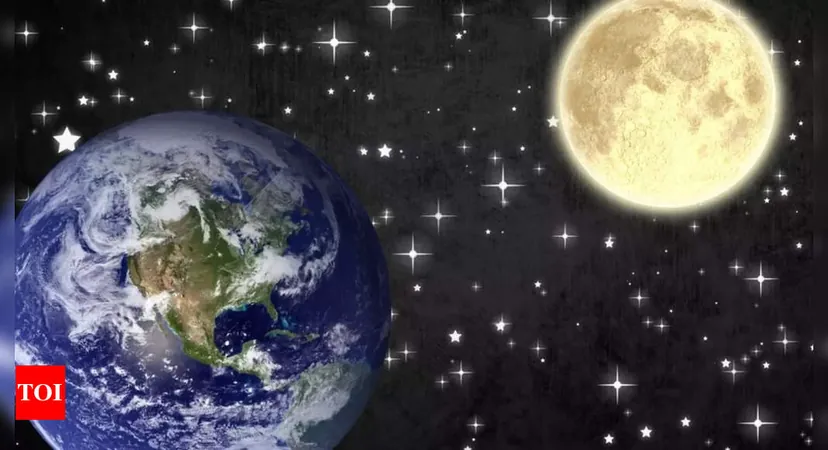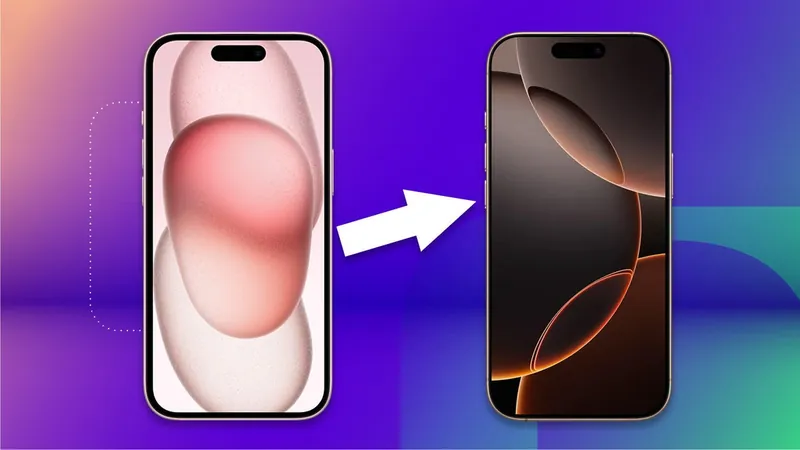
Earth’s Temporary ‘Second Moon’ 2024 PT5 Set to Say Goodbye: Here’s How to Catch a Glimpse Before it Leaves!
2024-11-23
Author: Nur
For the last couple of months, Earth has had a fascinating guest—a 33-foot wide asteroid known as 2024 PT5, affectionately dubbed a "mini-moon." Discovered by NASA's Asteroid Terrestrial-impact Last Alert System (ATLAS), this intriguing space rock is believed to be remnants of our own moon, ejected during ancient celestial collisions. Spectral analysis has confirmed its lunar origin, showcasing similarities to samples collected during previous lunar missions.
Mark your calendars! This transient mini-moon will be departing our vicinity on **November 25**, just in time for the holiday season, and is unlikely to stick around long enough for Thanksgiving festivities on November 28. With its unique orbit and properties, 2024 PT5 has strayed close enough to our planet to watch for a short while, but it is now preparing to resume its journey through the cosmos.
Unlike permanent moons, mini-moons like 2024 PT5 orbit the sun in paths similar to those of Earth and are only captured temporarily due to their low velocities. The analysis of this asteroid indicates that its rapid rotation—taking less than an hour to complete a full spin—suggests it could be a sizable fragment from the moon’s surface or a piece of a larger celestial body that broke apart.
How to Watch 2024 PT5 Before it Leaves!
If you want to get a glimpse of this cosmic visitor, you'll need some specialized tools! Due to its faintness, spotting this mini-moon requires telescopes with apertures of at least 30 inches. This may be your last chance to see 2024 PT5 until 2055, making it a rare astronomical event worth witnessing.
The Fascinating Connection Between Earth and Its Mini-Moon
The existence of 2024 PT5 is closely linked to the giant impact hypothesis, which posits that our moon was formed about 4 billion years ago when a massive collision released molten material from Earth into space, eventually creating the celestial body we see today. This theory further establishes Earth as the 'grandparent' of this temporary moon.
Carlos de la Fuente Marcos, a professor at the Universidad Complutense de Madrid and the lead author of the discovery, emphasized that various lines of evidence point toward the lunar origins of 2024 PT5. "The asteroid's rapid rotation and chemical composition align with materials brought back by missions such as Russia’s Luna series and NASA’s Apollo missions,” he stated, reinforcing the idea that this mini-moon is indeed a distant relative of our own natural satellite.
What’s Next for 2024 PT5?
The mini-moon comes from the Arjuna asteroid group, where it shares space with other cosmic wanderers that typically roam about 93 million miles (150 million kilometers) from the sun. Asteroids from this group can glide close to Earth, within a range of about 2.8 million miles (4.5 million kilometers), and at relatively slow speeds of under 2,200 miles per hour (3,540 km/h).
As 2024 PT5 prepares to leave, it symbolizes more than just a passing celestial body; it’s an opportunity to reflect on our connection to the cosmos and understand our history in a broader universe. Don't miss your chance to witness this stunning astronomical event!
Stay tuned for more updates on other cosmic occurrences and make sure to keep looking up—who knows what other surprises await us in the depths of space?



 Brasil (PT)
Brasil (PT)
 Canada (EN)
Canada (EN)
 Chile (ES)
Chile (ES)
 España (ES)
España (ES)
 France (FR)
France (FR)
 Hong Kong (EN)
Hong Kong (EN)
 Italia (IT)
Italia (IT)
 日本 (JA)
日本 (JA)
 Magyarország (HU)
Magyarország (HU)
 Norge (NO)
Norge (NO)
 Polska (PL)
Polska (PL)
 Schweiz (DE)
Schweiz (DE)
 Singapore (EN)
Singapore (EN)
 Sverige (SV)
Sverige (SV)
 Suomi (FI)
Suomi (FI)
 Türkiye (TR)
Türkiye (TR)